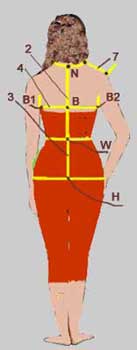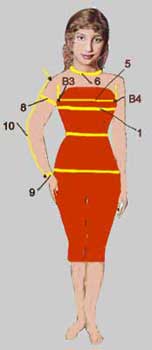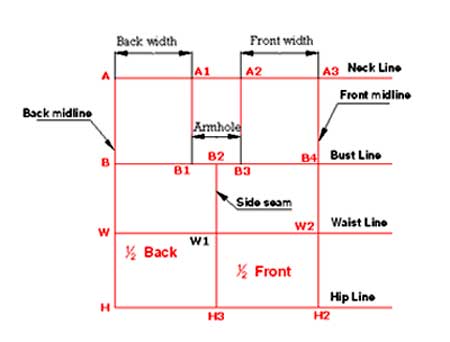- Home
- Make a Garment
How to Make a Garment
Neither beautiful yarn, nor one-of-a-kind pattern will make you happy unless your garment fits you
Last Updated 01-28-2021
To make a garment which you would like to wear again and again means that it has to fit your body and compliment it.
It is not that difficult to do if you have a pretty standard body and a garment you chose has a classical style. If it is not your case, much safer to make a paper pattern to be sure your garment will fit you exactly when it is finished.
I am not standard. All the schematics provided with patterns just don't work for me.
That's why I've always had my own a small-scale pattern for each project since I began to knit and crochet.
I think it is not a bad idea to have a full-scale paper pattern in case you are going to make a garment which is not classical and requires some special adjustments.
Here is my experience.
I buy the cheapest knit fabric ( it is pretty stretchy similar to a hand crocheted/knitted fabric), pin a full scale paper pattern to the fabric, outline it, and cut the pattern pieces remembering to allow for seam allowances.
After the pieces are seamed together, one can easily see what kinds of alterations are necessary to make a garment fit exactly.
What do you need to make a garment pattern? You will need a helper to do 10 measurements. Look at the picture for the corresponding numbering.

1. Bust circumference. Measure around the fullest part of
the bust. For calculation we will use 1/2 of this measurement -
BS/2.
2. Back waist height (line NW) - BWH
3. Back length (line NH) - BL
4. 1/2 Back width (line B1B2) - BW/2
5. 1/2 bust width (line B3B4)- BSW/2
6. 1/2 neck circumference - NC/2
7. Neck-shoulder length - NSL
8. 1/2 arm circumference - AS/2
9. 1/2 cuff circumference - CC/2
To make a garment pattern base grid.
To make the process of making garment pattern easier, let's start from the base grid. It can be used for both set-in sleeves and raglan garments. Here are the measurements we will use for calculations.To make a base grid, start from point A :
Important Note:
1. Schematic pattern is designed for knit and crochet garments.
Doesn't work for sewing projects.
2.Works the best for the patterns with bust circumference (BS/2) no more than 50 cm (20 in).


Neck line
AA3 = BC / 2 + 2 sm = 48 cm + 2 cm = 50 cm
AA3 = BC / 2 + 0.8 in = 19 in + 0.8 in = 19.8 in
Bust line
AB = (BC / 2) / 3 +5 cm = 48 cm / 3 + 5 cm = 21 cm
AB = (BC / 2) / 3 +2 in = 19 in / 3 + 2 in = 8.3 in
Waist line
AW = BWH = 38 cm
AW = BWH = 15 in
Hip line
Depending on your hight, a hip line is located 16 - 20 cm (6.3 -
7.9 in) below the waist line. I chose an average - 18 cm (7.1
in)
WH = 18 cm
WH = 7.1 in
Back-width line
AA1 = BW / 2 = 19 cm
AA1 = BW / 2 = 7.5 in
AA1 = BB1
Front-width line
A3A2 = BSW / 2 = 19 cm
A3A2 = BSW / 2 = 7.5 in
A3A2 = B4B3
Side seam line
Distance B1B2=(AA3-BB1-B3B4)/2 = (50-19-19) / 2 = 12 / 2 = 6
cm
Distance B1B2 = (19.8 - 7.5 - 7.5) / 2 = 4.8 / 2 = 2.4 in
B1B2 = B2B3
To make a pattern for some particular project, choose from the "Related Pages" below.
Related Pages
Make a Sweater: How to make a set-in sleeves sweater pattern.
Crochet Top: How to crochet a sleeveless top of motifs.
Cardigan Sweater: A drop-shoulder cardigan for women.
A Baby Sweater: Make your pattern. Step-by-step instruction.
Crochet Slipper Pattern: Granny square project.








